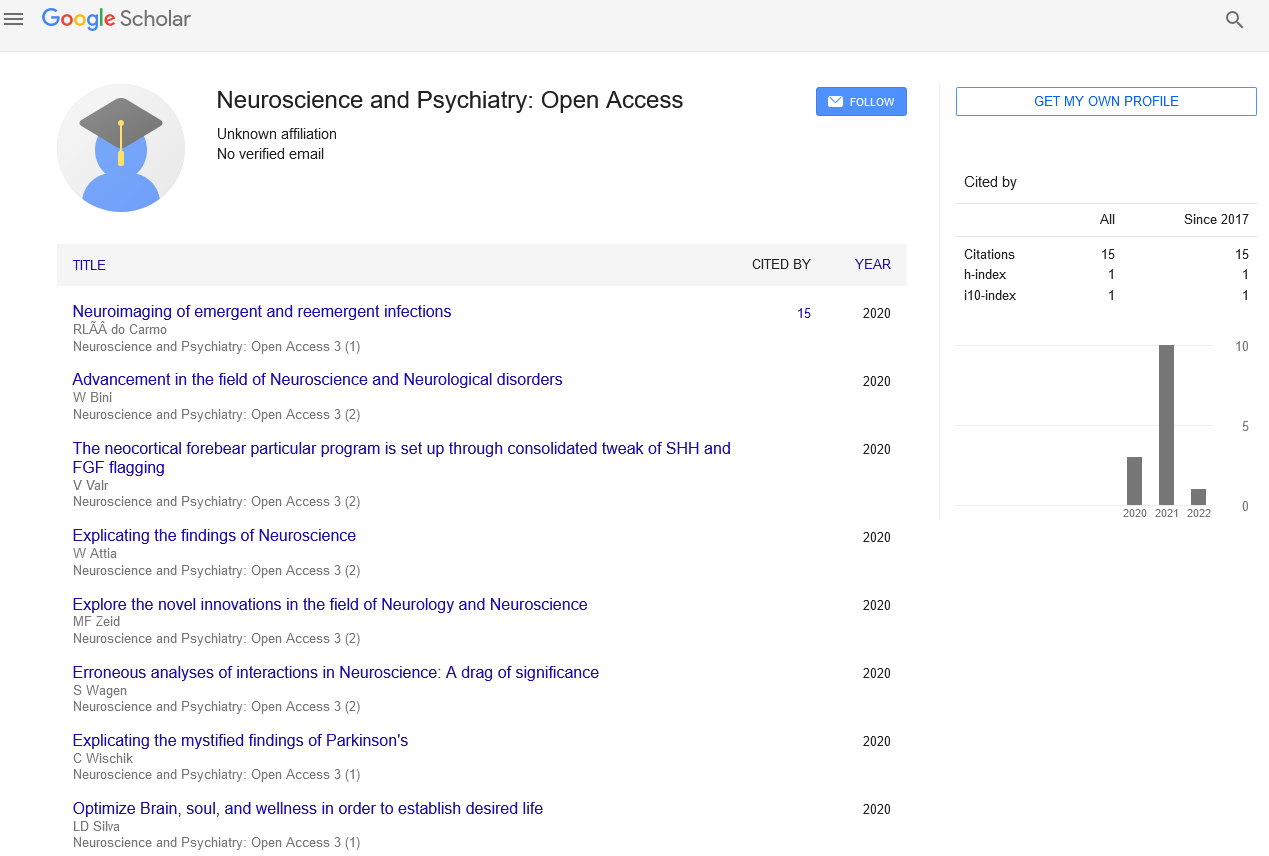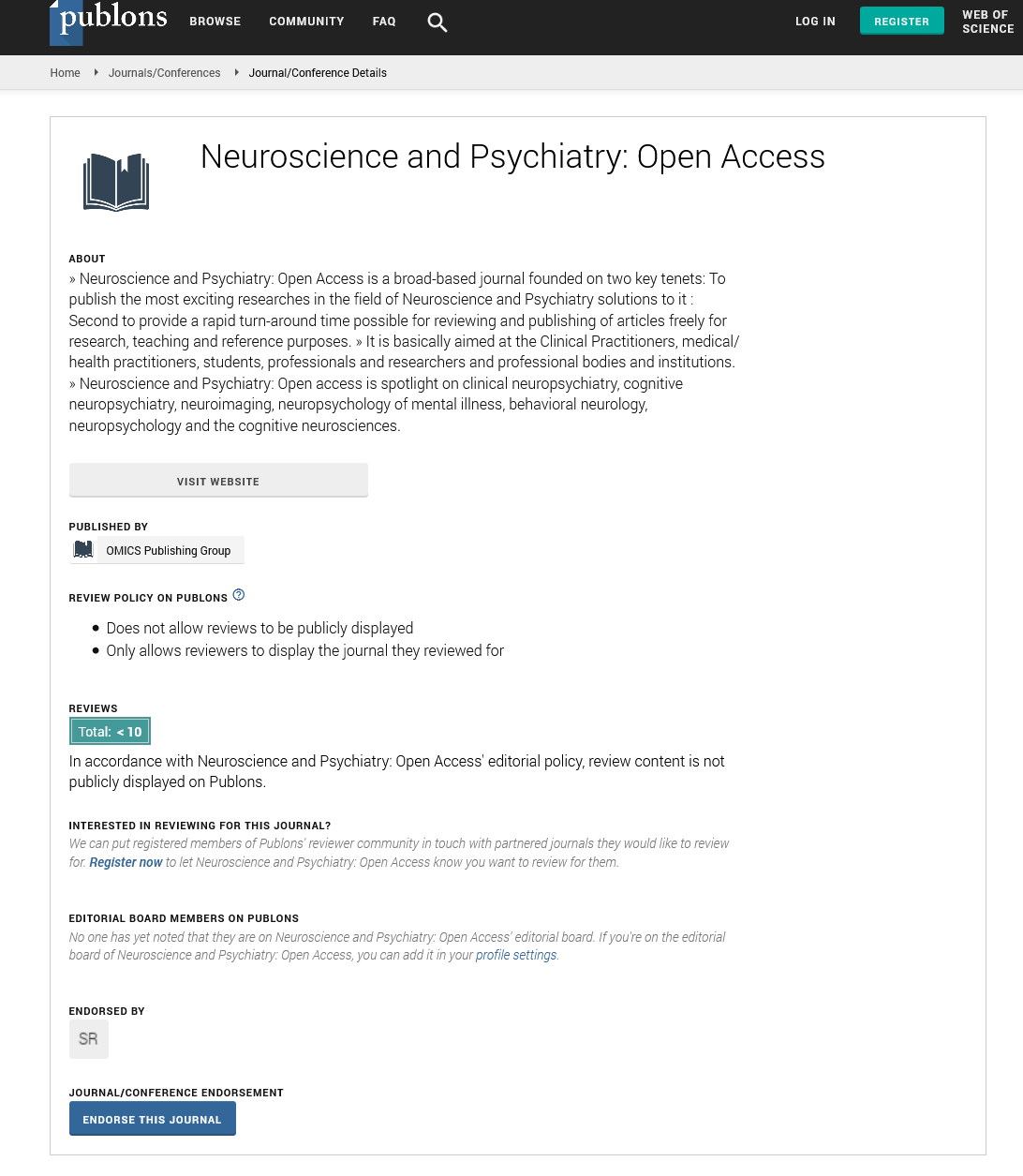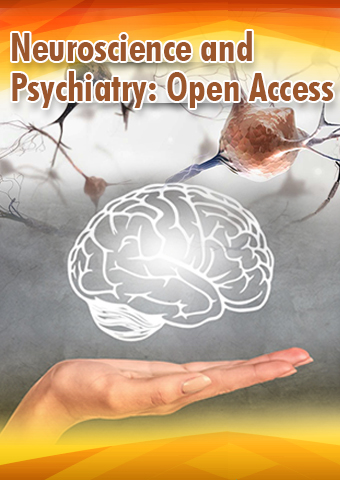Mini Review - Neuroscience and Psychiatry: Open Access (2023) Volume 6, Issue 1
Plan for Neuroscience Research During and After the COVID-19 Era: The SNACC Research Committee's suggestions
John Halle*
Department of Neuroscience Australia
Department of Neuroscience Australia
E-mail: Halle_j@gmail.com
Received: 28-Jan-2023, Manuscript No. npoa-23-87720; Editor assigned: 31-Jan-2023, Pre-QC No. npoa-23- 87720 (PQ); Reviewed: 14-Feb-2023, QC No. npoa-23-87720; Revised: 16- Feb-2023, Manuscript No. npoa-23- 87720 (R); Published: 23-Feb-2023, DOI: 10.37532/npoa.2023.6(1).04-06
Abstract
Numerous facets of neuroscience research have been affected by the COVID-19 pandemic. The SNACC Research Committee met virtually at the Society of Neuroscience in Anaesthesiology and Critical Care (SNACC) Annual Meeting to discuss potential strategies for facilitating research activities and the difficulties faced by researchers during the COVID-19 pandemic. This consensus statement includes these issues and suggestions. The goals are as follows: provide an overview of the difficulties and disruptions that the COVID-19 pandemic has posed to neuroscience research, and put forth a set of unanimous recommendations for enhancing the sustainability of research throughout and after the current pandemic. The safety of laboratory and human subject study operations can be improved with specific recommendations. If specific investigations are impossible due to changes in society or regulations, complementary research activities are also outlined for laboratory and clinical researchers. In order to ensure that scientific collaboration and the exchange of ideas can continue, the role of virtual platforms is also discussed in relation to scheduling research meetings, fostering new collaborations, and holding conferences.
Keywords
Coronavirus • COVID-19 • Pandemics • Neurosciences • Research
Introduction
The pandemic of Coronavirus Disease (COVID-19) has resulted in a global crisis with serious effects on public health and the economy [1]. The pandemic has also had a significant impact on clinical and laboratory research, with the exception of COVID-19-related research, many hospitals and universities having halted or significantly reduced their efforts. Due to the high levels of psychological stress brought on by the pandemic, some scientists are considering quitting research altogether. Clinical neuroscience research has been particularly affected by COVID-19 by suspending trials testing novel therapies for neurologically vulnerable patients [2]. Chart reviewbased strategies are frequently either unavailable or of limited benefit due to the lack of validated biomarkers for adverse neurological outcomes that are relevant to perioperative physicians. As a result, developing a well-thought-out, programmatic strategy to advance neuroscience research during the COVID-19 pandemic is absolutely necessary [3]. This strategy could also be useful in future circumstances that could similarly affect research activity. The COVID-19 pandemic has had a significant negative impact on neuroscience research. For a variety of aspects of research operations, researchers have been confronted with decreased funding, resource limitations, restrictions on laboratory and hospital access, and personnel shortages [4]. Additionally, scientists have been absent from research, preventing the neuroscience community from working together. Since many investigators were required to work remotely, these operations suspensions have also resulted in social isolation. Isolation like this can exacerbate mental and emotional stress [5]. As a result of increased volume or staff shortages, physicians may also experience stress and anxiety as a result of emergency redeployment and additional clinical responsibility. Indeed, researchers have experienced psychological strain as a result of COVID-19 [6]. A recent survey of UK neuroscientists by the British Neuroscience Association highlights these issues. Nearly all respondents to this survey were concerned that inadequate funding would have an effect on their research; 88% of researchers have experienced negative progress in their work, and approximately 32% have contemplated quitting neuroscience research altogether [7]. For early-stage researchers who rely on funding and resources to launch new research programs, this phenomenon is especially concerning. Additionally, there are clear indications that the closure of childcare facilities and schools has a disproportionate impact on women researchers and researchers with young children.
General Suggestions and Related Research Projects
This time can be used by researchers to analyze data that has already been collected, complete manuscripts, write protocols for upcoming studies, and prepare new grant applications, including opportunities for neuroscience funding for COVID-19 research [8]. Some researchers have successfully switched their research focus from clinical and hands-on laboratory research to "dry-lab" and "in silica" projects. Many projects in neuroscience research, especially those based on animal or human electrophysiological databases, may be suitable for remote analysis. Depending on the circumstances, some funding agencies, like the U.S. National Institutes of Health and the Canadian Institutes of Health Research, may grant extensions. Additionally, research activities can be advanced through the use of digital platforms. Colleagues can schedule virtual meetings to promote new collaborations and generate new hypotheses for testing in the future [9]. Some organizations, such as SNACC, have been able to hold virtual conferences, which theoretically lower collaboration barriers, thanks to a rise in digital communication fluency. This virtual format does not necessarily replace spontaneous discussions and brainstorming triggered by chance encounters at meetings and conferences, despite the fact that it results in time and cost savings for researchers. Further growth of digital platforms hopefully will better support such creative encounters. However, the virtual format does not necessarily help to reduce costs or promote diversity by improving inclusivity. Additionally, "flexible availability" and regularly scheduled interactions are made possible by moving to digital communication methods. Digital platforms can also be used for journal clubs, seminars, and team meetings [10]. This virtual technology has also made it possible for faculty and instructors to invite guest speakers to classes and seminars. This makes it easier to network with colleagues both inside and outside the institution and enriches the curriculum without having to pay for guest faculty travel. Science in the Lab: This led to a crisis like no other for global research organizations, particularly those working in the neurosciences. In many instances, the only activities that were allowed were those that were necessary for COVID-19- related research or the long-term maintenance and continuation of biological stocks. Physical separation, maintaining a low staffing density, and the use of sanitization protocols are just a few of the on-going restrictions that have restricted the gradual reopening of laboratory facilities. Although some research activities are permitted, these restrictions continue to impede progress due to restricted laboratory access and a lack of research personnel to carry out multiple- day study protocols. For many researchers, research progress, particularly the generation of experimental data, has slowed dramatically, putting a damper on the timely completion of grant objectives, manuscripts, and, frequently, student graduation. Additionally, many medical students are not exposed to laboratory science. Because of on-going restrictions, undergraduate and post-baccalaureate students who are applying to medical school typically make up the laboratory workforce. However, many of these students have not worked in laboratories during the pandemic.
Human subjects in non-clinical research
This is especially true for studies like educational intervention and clinical simulation that always have multiple participants. Additionally, there is an exposure risk that must be mitigated due to the interaction between participants and researchers. The majority of non-clinical human volunteer studies have no direct benefit for participants other than monetary compensation, and participation in any in-person activity now carries the risk of contracting SARS-CoV-2. From an ethical standpoint, this is especially significant. Investigators should continuously monitor and adhere to all applicable institutional policies and recommendations from the local health department as conditions change. It is essential to keep in mind those policies, regulations, and procedures may significantly differ between institutions and nations. When conducting research during the pandemic, guiding principles typically strike a balance between the benefits of the research and the risks to participants and staff. COVID-19 relative risk tools have been implemented at some universities, preventing research on participants who meet high risk thresholds. During COVID-19 surges, volunteer research activities may be halted in some instances.
Conclusions
The research communities have suffered as a result of the COVID-19 pandemic. Adversity, on the other hand, makes people stronger in their resolve, and researchers have shown a lot of ingenuity, perseverance, and teamwork in resolving the many problems that have come up during this pandemic. During this challenging time, biomedical societies like SNACC have devoted a significant amount of time and resources to the development of neuroscience. This Consensus Statement's concepts and recommendations may also contribute to making research more adaptable and flexible, particularly in the event of a similar disruption of research activity in the future.
References
- Rai AT, Leslie-Mazwi TM, Fargen KM et al. Neuroendovascular clinical trials disruptions due to COVID-19 Potential future challenges and opportunities. J Neurointerv Surg. 12, 831–835 (2020).
- Myers KR, Tham WY, Yin Y et al. Unequal effects of the COVID-19 pandemic on scientists. Nat Hum Behav. 4, 880–883 (2020).
- Sharma D. The world of virtual conferencing: is the pandemic paving the path. J Neurosurg Anesthesiol. 33, 7–9 (2021).
- Marshall M. The lasting misery of coronavirus long-haulers. Nature. 585, 339–341 (2020).
- Lumeng JC, Chavous TM, Lok AS et al. Opinion: a risk–benefit framework for human research during the covid-19 pandemic. Proc Natl Acad Sci USA. 117, 27749–27753 (2020).
- Varma DS, Strelnick AH, Bennett N et al. Improving community participation in clinical and translational research: CTSA sentinel network proof of concept study. J Clin Transl Sci. 4, 323–330 (2020).
- Numan T, Boogaard M, Kamper AM et al. Recognition of delirium in postoperative elderly patients: a multicenter study. J Am Geriatr Soc. 65, 1932–1938 (2017).
- Kheterpal S. Clinical research using an information system: The Multicenter Perioperative Outcomes Group. Anesthesiol Clin. 29, 377–88 (2011).
- Jones RS, Brown C, Opelka F. Surgeon compensation pay for performance the American College of Surgeons National Surgical Quality Improvement Program the Surgical Care Improvement Program and other considerations. Surgery. 138, 829–36 (2005).
- Li YC, Bai WZ, Hashikawa T. The neuroinvasive potential of SARS-CoV2 may play a role in the respiratory failure of COVID-19 patients. J Med Virol. 92, 552–555 (2020).
Indexed at, Google Scholar, Crossref
Indexed at, Google Scholar, Crossref
Indexed at, Google Scholar, Crossref
Indexed at, Google Scholar, Crossref
Indexed at, Google Scholar, Crossref
Indexed at, Google Scholar, Crossref
Indexed at, Google Scholar, Crossref
Indexed at, Google Scholar, Crossref
Indexed at, Google Scholar, Crossref


